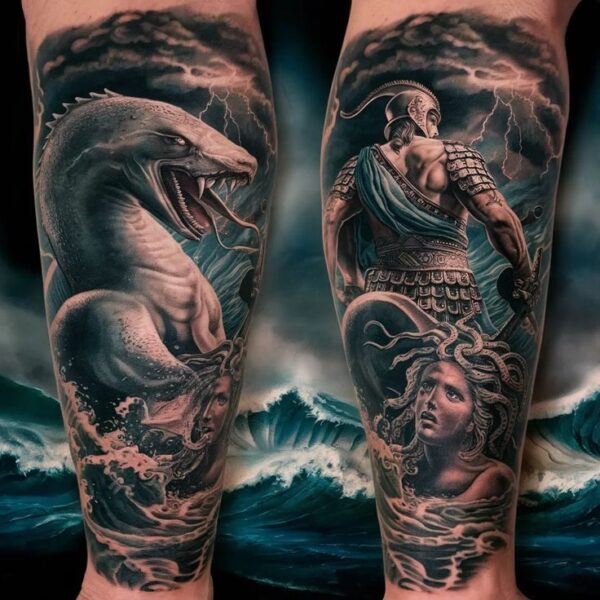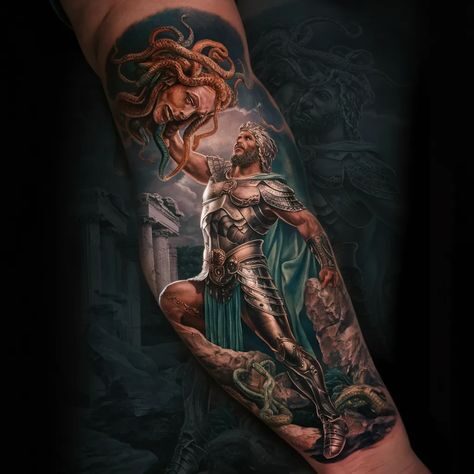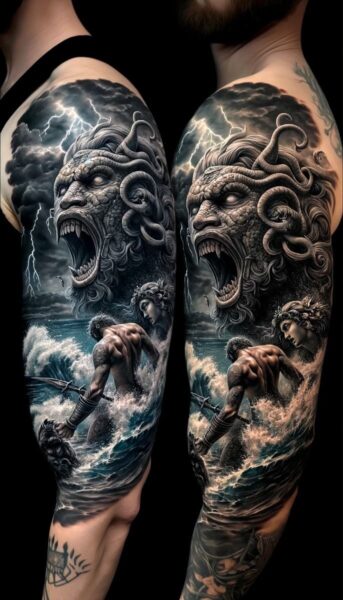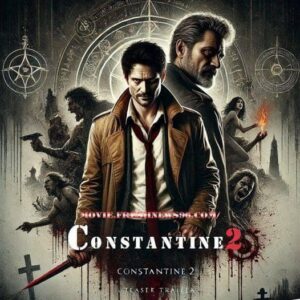
Tattoo art is a powerful medium for expressing personal beliefs, stories, and interests. Among the myriad of themes, Greek mythology stands out, offering rich narratives and symbolism. One particularly captivating myth is the clash between Perseus and Cetus, a story of heroism, rescue, and divine intervention. This article explores the significance, styles, and considerations of Perseus and Cetus tattoo art, providing insights for those interested in this compelling theme.
The Myth of Perseus and Cetus
The legend of Perseus and Cetus is rooted in Greek mythology and tells the story of Perseus, a hero and son of Zeus, and his rescue of Andromeda from the sea monster Cetus. According to the myth, Andromeda was chained to a rock as a sacrifice to Cetus, a punishment sent by Poseidon to her parents for their hubris. Perseus, armed with the head of Medusa, which could turn any onlooker to stone, defeated Cetus and saved Andromeda, showcasing his bravery and heroism.
This myth has captivated audiences for centuries, symbolizing the triumph of good over evil, the importance of courage, and the power of divine favor. In tattoo art, these elements translate into powerful symbols of personal strength and the ability to overcome adversity.
Symbolism and Meaning

Tattoo art often carries deep personal significance, and the story of Perseus and Cetus offers rich symbolic meaning. Perseus represents courage, determination, and heroism. His victory over Cetus, a representation of chaos and fear, symbolizes overcoming great challenges. Andromeda, often depicted as a symbol of purity and innocence, represents the rewards of bravery and the triumph of good over evil.
A tattoo depicting this myth can serve as a powerful emblem of personal strength, resilience, and the journey of overcoming life’s challenges. It can also be a tribute to the classic themes of heroism and the victory of light over darkness.
Popular Styles and Design Elements
When it comes to Perseus and Cetus tattoos, there are several popular styles and design elements to consider:

- Realistic and Classical: This style draws inspiration from classical art, featuring detailed, realistic depictions of the mythological characters and scenes. These tattoos often resemble ancient Greek sculptures or Renaissance paintings, capturing the grandeur and drama of the myth.
- Fantasy and Modern: Modern interpretations may include vibrant colors, abstract elements, and imaginative features, blending traditional mythological symbols with contemporary artistic styles. This approach allows for greater creative expression and personalization.
- Minimalistic and Symbolic: For those who prefer a more subtle approach, minimalistic designs focusing on key symbols—such as Perseus’s sword, Medusa’s head, or stylized waves representing Cetus—can be powerful and elegant. These tattoos often carry significant personal meaning while maintaining a simple aesthetic.
- Blackwork and Line Art: This style focuses on strong, bold lines and high contrast, often using only black ink. It can be particularly striking and suitable for those who appreciate a more graphic and modern look.
Choosing the Right Tattoo Artist
Selecting the right tattoo artist is crucial for achieving a tattoo that accurately reflects your vision and the mythological elements you wish to portray. Here are some tips for choosing an artist:
- Specialization: Look for artists who specialize in mythological or fantasy themes, as they are more likely to have experience with the specific motifs and symbolism you want.
- Portfolio: Review the artist’s portfolio to see examples of their previous work. Pay attention to their style, use of color, and ability to capture detail.
- Consultation: Schedule a consultation to discuss your ideas and preferences. A good artist will take the time to understand your vision and offer suggestions to enhance the design.
Placement and Size Considerations

The placement and size of your tattoo are important considerations that can affect the overall design and impact. Larger tattoos, which allow for more detail and complex scenes, are often best placed on areas like the back, chest, or thigh. Smaller designs, which may focus on specific symbols or elements of the myth, can be placed on the forearm, upper arm, or calf.
Consider how visible you want the tattoo to be and how it will fit with any existing tattoos. Placement can also affect the tattoo’s longevity and ease of maintenance.
Aftercare and Maintenance
Proper aftercare is essential for the healing process and the longevity of your tattoo. Here are some general aftercare tips:
- Keep It Clean: Gently wash the tattoo with mild soap and water. Avoid using harsh chemicals or scrubbing the area.
- Moisturize: Apply a suitable tattoo aftercare lotion or ointment to keep the skin hydrated and promote healing.
- Avoid Sun Exposure: Sunlight can fade tattoos, so it’s important to protect the tattooed area from direct sunlight, especially during the healing process. Use sunscreen if the tattoo is exposed.
- Follow Your Artist’s Instructions: Each tattoo artist may have specific aftercare recommendations. It’s important to follow their guidance to ensure proper healing and maintain the tattoo’s quality.
Conclusion
The mythological clash between Perseus and Cetus offers a rich tapestry of symbolism and dramatic imagery, making it an inspiring choice for tattoo art. Whether depicted in a classical, modern, or minimalistic style, a Perseus and Cetus tattoo can serve as a meaningful expression of personal strength, resilience, and the triumph over adversity. By carefully choosing the design, placement, and a skilled tattoo artist, you can create a timeless piece of art that resonates with the ancient allure of Greek mythology and your personal journey.





